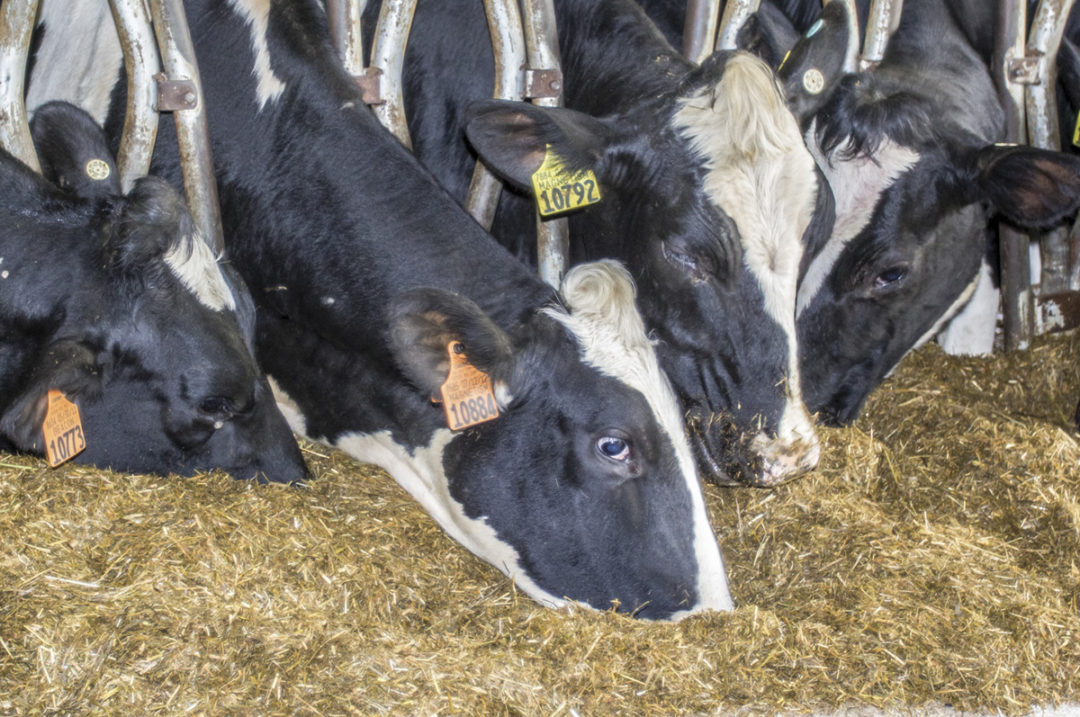As market pressures continue to put tension on your operation's bottom line, are you confident your investment in feed is being used as efficiently as possible? To optimize feed costs, you can use the rumen’s unique structure to your advantage. The rumen’s microbes allow it to convert the carbohydrates in forages into volatile fatty acids, which serve as energy. Because of how rumen microbes function, they can convert lower-cost, non-protein nitrogen (NPN) sources, like urea, to a superior source of metabolizable protein (MP) – reducing protein supplementation costs. These two processes will help you improve feed efficiency and herd productivity.
An unbalanced ration has a cost
High feed prices put added pressure on your cows to produce with fewer inputs, so avoiding unbalanced, unproductive rations is critical. Feed makes up the bulk of your costs to produce milk, and if diets are not being formulated to work with and enhance the rumen’s process, more money is being spent on less productivity. This inefficiency will drive up other costs on the dairy by requiring more inputs for each cow, producing more manure with unutilized nutrients and needing more time and labor to remove it.
An unbalanced ration is also going to disrupt rumen function. A slight difference in forage quality can cause a drop in production. Forage quality differs across growing seasons, point of harvest and storage method – this requires attention to detail. If these differences among forages are not properly balanced with concentrates, the abundance of starch will lower rumen pH and can lead to rumen acidosis, lower milk output and cut feed efficiency.
The benefits of focusing on feed efficiency
To avoid these pitfalls, formulating the diet to cater to the rumen first will provide the necessary nutrients for the best performance. Improving feed efficiency is the key to staying profitable. If feed efficiency is improving, it means cows are more efficiently converting feed to milk and the cost per cow is decreasing. The feed concentrate you choose to balance starch in the ration will impact this number and how much room exists for improvement. Choosing a concentrate that’s formulated with protein, vitamins and amino-acid complexed trace minerals is the best option to optimize the rumen and increase feed efficiency up to 9%.
With amino-acid complexed trace minerals in the diet, you can maximize herd health and production potential while driving feed efficiency up. Trace minerals support a number of biological functions in the cow including immunity, reproduction, metabolism and fiber digestion. When receiving and absorbing the correct amounts of trace minerals, issues that divert nutrients and energy away from milk production, like lameness, immune challenges and poor reproductive performance, are less present. This allows for those biological processes to efficiently take place without hindering a cow’s ability to produce.
Formulating a balanced ration with performance trace minerals delivers improved feed efficiency while supporting less lameness, increased pregnancy rate, fewer days open and lower somatic cell count. With a proven nutrition strategy, feed efficiency and performance benefits are simultaneously helping you achieve greater health and return on investment per cow.
Evaluate and adjust the ration
To make sure you’re driving feed efficiency up while unlocking these health and performance benefits, take some time to evaluate your current nutrition program with these questions:
- What would reducing feed inputs mean for this operation?
- Is the ration balanced and formulated for rumen functionality?
- Does my concentrate effectively balance out forage variability?
- Does my concentrate include the recommended amounts of amino-acid complexed trace minerals?
Focusing on fine-tuning for feed efficiency and partnering with an expert who can help analyze your herd’s needs will be an important strategy as cost pressures continue to rise. With some simple adjustments, you can protect your operation’s bottom line.







